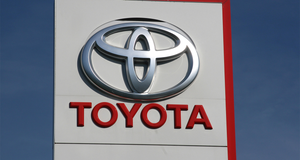Floating Wetlands Treat Canadian Community’s Human Wastewater
Brazeau County Alberta’s mayor, Bart Guyon, happens to be a veteran livestock rancher, and has learned ways over time to leverage nature to run a productive, environmentally friendly operation. Then he began looking to nature to take on another job: treating human wastewater.

Brazeau County Alberta’s mayor, Bart Guyon, happens to be a veteran livestock rancher, and has learned ways over time to leverage nature to run a productive, environmentally friendly operation. Then he began looking to nature to take on another job: treating human wastewater.
That early investigation eventually led to a county project utilizing floating wetlands to treat sludge pumped from a small, rural community to a nearby lagoon. These engineered wetlands, an infrastructure of native vegetation, consume the human waste contaminants held in the lagoon.
It’s a pretty simple set up. Plants float in perforated baskets and place their roots in the lagoon water; the roots absorb nitrogen, phosphorus, and other constituents that are pollutants to the water, but rich nourishment for the plants, fueling their growth.
Main configuration components are 20 connected modules made of low-density polyethylene that hold the baskets, with handrails and a ramp installed for easy, safe access by crews who check on operations and do maintenance if needed, though it’s a mostly self-sustaining system, Guyon says.
Each unit can take up 500 kilograms of load while providing habitat for wetland plants, animals, and microorganisms.
“The wastewater is treated to a higher quality. This reduces the risk to the receiving creek and environment when discharging from the lagoon to the creek in the fall,” says Darcy Mulroy, Utilities supervisor, Brazeau County Public Works.
About 55 cubic meters of sewage flow to the system daily, and early research shows the floating wetlands, designed for a 50-year lifespan, can treat all of it.
A bonus is Brazeau County will be able to significantly extend lagoon cleaning intervals, anticipates Guyon. Historically, cleanings are only required every 20 years or so, but it’s a labor-intensive job – and expensive –about a $2M investment.
“We only put in the wetlands a year ago, so we will see how much we can increase cleaning intervals. But we are finding it is consuming sludge to make the water very clear. It’s slowing the maintenance we have to do because the plants are doing part of the job,” he says.
Operations staff routinely check components to ensure they are running up to par. Other than that, the plants just need to be harvested twice a year to promote more growth and uptake, and to prevent the grass from decomposing in the lagoon.
Research by an engineering firm and Alberta University, comparing operating under aerobic conditions to anaerobic conditions, showed an aerobic system adding oxygen bumped water quality significantly. And it more than doubled the nutrient uptake, to the tune of about 40% uptake in some major nutrients.
Some common pollutants in wastewater deplete the dissolved oxygen. Oxygenation recharges the wastewater so it can revitalize the bacteria that consume the nutrients, explains Zimran Khokhar, project manager, Brazeau County Public Works. Aerobic systems also take care of another treatment facility headache: they mitigate odor.
Solar-powered aeration lines below the modules feed oxygen to the roots and wastewater, and the solar system also provides electricity to a nearby residential garbage collection station.
Alberta’s cold winters present limitations, with uptake drastically reduced, if not stopped altogether, when the plants become dormant. That means the effluent water flowing through the wetlands undergoes minimal to no treatment for several months.
But the next planned phase will resolve these issues, says Mulroy, as it will entail designing and building an indoor wetlands system to treat the wastewater year-round.
At a larger scale and indoors, the system could significantly reduce wastewater pollutants removing 100% of E.coli, ammonia, and other typical wastewater contaminants such as Carbonaceous Biochemical Oxygenation Demand or Total Suspended Solids, Khokhar says.
Pending good outcomes of the next phase, Brazeau County will apply for twice-yearly discharge. And or it may explore water reuse possibilities for a return on the roughly $350,000 in capital expenditures, covered largely by a grant from the Federation of Canadian Municipalities’ Green Municipal Fund.
Guyon expounded on potential to capitalize on the cleaned water, pointing to what’s come from an indoor water treatment system in a nearby community that also uses plants to absorb nutrients in water.
“A company setting up in Cynthia, Alberta has proven they can make barsol gasoline and diesel from hydrogen they’d extract from Cynthia’s cleaned water. We are hoping to be able to use our cleaned wastewater in similar or different ways, for instance for steam in manufacturing processes,” he says.
Currently Brazeau County’s wastewater goes to the Saskatchewan River and ultimately ends up in the Hudson Bay.
“If we can leverage floating wetlands to consume pollutants in lagoons, we no longer have to dump those pollutants into creeks that make their way into these larger water bodies. And we can help solve some very big environmental problems,” he says.
About the Author(s)
You May Also Like




